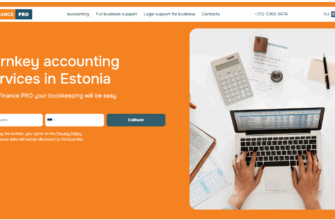European countries have become leaders in developing layered, intelligent defenses against financial fraud. Whether you’re a consumer worried about identity theft or a small business owner trying to stop bank fraud, the landscape of fraud prevention measures across Europe is both sophisticated and constantly evolving. In this article we’ll walk through the most effective methods of protection against financial fraud in European countries, explain how laws and technology work together, and give practical steps you can take right now to protect yourself and your organization. Read on—this is about real risks and real, usable defenses.
- Why Europe’s approach matters
- Key legal frameworks and policies
- Major European regulations to know
- Technology-driven defenses
- Banking sector practices
- Collaboration and information sharing
- Examples of collaborative measures
- Consumer-focused protections and education
- Practical tips for individuals
- Business and institutional strategies
- Top measures for businesses
- Challenges and evolving threats
- Where fraud is heading
- How to evaluate which protection methods you need
- Case studies: practical results from European initiatives
- Lessons learned
- Conclusion
Why Europe’s approach matters
Europe is not a single regulatory entity, yet it’s remarkably coordinated. The European Union provides directives and regulation that set a baseline—like anti-money laundering rules and consumer protection standards—while individual member states implement national policies that fit local markets and risks. This mix of continental regulation and local enforcement creates a unique environment where fraud prevention measures can scale quickly and adapt to emerging threats such as cyberattacks and identity theft. From strong customer authentication to transaction monitoring, European countries pursue a multi-layered, risk-based approach to combat financial fraud.
Key legal frameworks and policies
A lot of protection against financial fraud in European countries is anchored in legal frameworks that require institutions to act responsibly and share information when necessary. Important pieces include anti-money laundering (AML) directives, payment regulations, and data protection rules. Together they form a regulatory framework that compels banks, fintechs, and payment services to implement strong controls.
Major European regulations to know
| Regulation/Directive | What it targets | Why it matters |
|---|---|---|
| PSD2 (Payment Services Directive 2) | Secure payments and open banking | Introduced Strong Customer Authentication (SCA), making online payments safer |
| AMLD5/AMLD6 (Anti-Money Laundering Directives) | Money laundering and terrorism financing | Expands reporting obligations and due diligence for financial institutions |
| GDPR (General Data Protection Regulation) | Personal data protection | Limits misuse of personal data and mandates breach notification |
| National Financial Intelligence Units (FIUs) | Suspicious activity reporting | Centralizes information and improves enforcement against financial crime |
Technology-driven defenses
Technology is the frontline for fraud prevention measures. Banks and fintechs in European countries have invested heavily in systems that detect anomalous behavior in real time and stop fraud before it completes. The biggest tech players use machine learning, biometrics, and advanced transaction monitoring to spot subtle signs of bank fraud and identity theft.
- Machine learning models analyze patterns in transaction data to flag suspicious activity that humans might miss.
- Behavioral biometrics—typing patterns, device movement, and mouse behavior—add a layer of identity verification beyond passwords.
- Two-factor (2FA) and multi-factor authentication (MFA), especially under PSD2’s Strong Customer Authentication, dramatically reduce unauthorized access to accounts.
- Real-time fraud scoring allows banks to decline or challenge risky transactions immediately.
These technologies, combined with the regulatory requirement to maintain strong customer authentication, mean that account takeover and payment fraud are much harder to execute than they used to be.
Banking sector practices
Banks in European countries use a toolbox of practical fraud prevention measures that are worth noting. From Know Your Customer (KYC) checks to sanctions screening and secure mobile apps, these practices protect both the institution and the consumer.
- KYC and enhanced due diligence: Verifying identity at onboarding and for higher-risk customers reduces the chance of fraud later.
- Transaction monitoring: Automated systems look for deviations from normal behavior and automatically generate alerts.
- Sanctions and PEP screening: Banks screen customers and transactions against global sanctions lists and politically exposed persons lists to prevent illegal financial flows.
- Account takeover prevention: Notifications, login alerts, and session monitoring help detect unauthorized access quickly.
Collaboration and information sharing

No institution can beat fraud on its own. Many European countries have built collaborative systems where banks, fintechs, law enforcement, and regulators share threat intelligence. Public-private partnerships and centralized fraud databases allow institutions to learn from each other and act quickly when a new scam emerges.
Examples of collaborative measures
- Fraud information sharing platforms where banks report details of ongoing scams.
- National reporting hotlines and centralized fraud registries that help track and stop serial fraudsters.
- Cross-border cooperation facilitated by EU agencies and bilateral agreements to handle scams that span multiple countries.
Consumer-focused protections and education
Protecting consumers is central to the fight against financial fraud. European countries invest in public awareness campaigns, financial literacy programs, and tools that make it easier for people to protect their own finances. When consumers understand how phishing, identity theft, and social engineering work, they become the first line of defense.
- Awareness campaigns: Simple guides on spotting phishing emails and fraudulent calls reduce victimization.
- Free credit monitoring and fraud alert services offered by some states and banks help people catch identity theft early.
- Clear complaint and dispute resolution mechanisms ensure consumers can recover funds and report suspicious activity.
- Easy-to-use online tools: Secure banking apps, instant transaction alerts, and easy ways to freeze accounts empower users.
Practical tips for individuals
Here are simple, high-impact steps individuals can take to protect themselves from financial fraud in European countries:
- Enable two-factor or multi-factor authentication on all financial accounts.
- Review bank statements and transaction alerts regularly; report anything suspicious immediately.
- Use strong, unique passwords and a reputable password manager.
- Never share one-time passcodes or banking passwords via phone, SMS, or email.
- Be cautious on public Wi-Fi—use a VPN for online banking or avoid it altogether.
- Keep your devices updated and install reputable security software.
Business and institutional strategies
For businesses—especially SMEs—fraud can be catastrophic. European countries support businesses with guidelines and tools to improve resilience. These include segmentation of duties, secure payment protocols, and ongoing staff training.
Top measures for businesses
- Segregation of duties to prevent internal fraud.
- Supplier verification and multi-step payment approval processes to avoid invoice fraud.
- Implementing secure APIs and following PSD2 and GDPR compliance when using third-party payment providers.
- Employee training on social engineering and secure handling of financial information.
- Regular audits and the use of forensic accounting tools to detect inconsistencies early.
Challenges and evolving threats
Even with strong protective measures, fraudsters adapt quickly. Emerging threats include deepfake scams, increasingly convincing phishing attacks, and cross-border payment fraud. European countries are constantly updating their fraud prevention measures, but consumers and businesses must stay informed and proactive.
Where fraud is heading
- AI-enhanced scams using deepfakes or synthetic identities to bypass authentication.
- Account takeover attempts through SIM-swapping and sophisticated phishing.
- Automated bot attacks that test stolen credentials at scale.
The best defense is agility: combining strong regulation, fast information sharing, and continuous technological updates.
How to evaluate which protection methods you need
If you’re deciding what to implement—whether you’re a consumer, a startup, or a bank—think in layers. No single solution eliminates risk. Effective fraud prevention is a combination of legal compliance, technological safeguards, employee and customer education, and active monitoring.
| Profile | Must-have protections | Recommended extras |
|---|---|---|
| Individual consumer | 2FA/MFA, alerts, strong passwords | Credit monitoring, VPN, identity theft insurance |
| Small business | Secure payment approvals, KYC for vendors | Employee training, periodic audits |
| Financial institution | SCA, AML systems, transaction monitoring | Fraud intelligence sharing, behavioral biometrics |
Case studies: practical results from European initiatives

Several European countries have demonstrated measurable success through coordinated action. For example, countries that invested in centralized fraud registries and mandatory real-time reporting have seen faster takedowns of scam networks. Nations that combine strong regulation like PSD2 with public education campaigns show fewer successful phishing and payment fraud attempts compared with less coordinated approaches. These results highlight the power of blending technology, law, and consumer awareness.
Lessons learned
- Fast reporting and data sharing reduce fraudsters’ window of opportunity.
- Regulatory mandates (e.g., SCA) drive adoption of security practices that benefit everyone.
- Continuous education keeps consumers alert to new scam techniques.
- Investment in advanced analytics pays off by detecting subtle patterns early.
Conclusion
The fight against financial fraud in European countries is ongoing and multifaceted. From strong customer authentication and AML compliance to machine learning-powered transaction monitoring and public awareness campaigns, the most effective protection against financial fraud combines robust regulation, advanced technology, and active public engagement. Individuals can protect themselves with simple habits—like enabling multi-factor authentication and monitoring accounts—while businesses should adopt layered controls and training. Institutions that share information and invest in adaptive systems create a safer financial ecosystem for everyone. Stay informed, adopt the basic protections, and don’t hesitate to use trusted resources to learn more.
To explore more in-depth guides, case studies, and updates on fraud prevention methods across Europe, visit https://themors.com/ and discover practical tips and expert analysis that can help you stay one step ahead of fraudsters.









